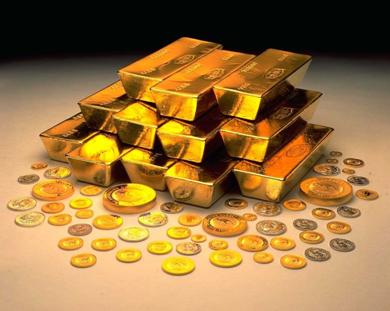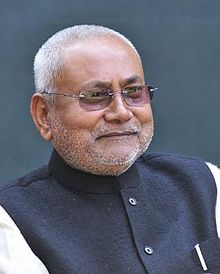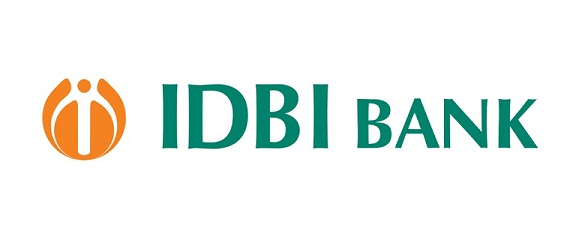
On November 5, 2015, the Prime Minister Narendra Modi launched the sovereign gold bonds. On the occasion Modi said: “India has no reason to be described as a poor country, as it has 20,000 tonnes of gold. He said the gold available with the country should be put to productive use, and these schemes show us the way to achieve this goal.”
Our fascination for gold has led to a situation where we have managed to accumulate 20,000 tonnes of gold over the years. To understand how big this number is, consider the following point made by the World Gold Council. As it points out: “At the end of 2014, there were 183,600 tonnes of stocks in existence above ground. If every single ounce of this gold were placed next to each other, the resulting cube of pure gold would only measure 21 metres in any direction.”
What does this mean? India has 20,000 tonnes or around 10.9% of the 1,83,000 tonnes of gold in existence. The tragedy is that India doesn’t produce almost any gold. In fact, in 2013-2014, we produced 1.4 tonnes of gold.
And how much did we import? The minister of state for commerce Nirmala Sitharaman(independent charge) in a written reply in the Lok Sabha had pointed out that Indian import of gold in 2013-2014 had stood at 638 tonnes.
So India produced 1.4 tonnes of gold and imported 638 tonnes of gold. Interestingly, the import of gold in 2013-2014 fell by around 25% from 845 tonnes in 2011-2012. In 2011-2012, India had produced 1.59 tonnes of gold. Hence, we practically import all the gold that we consume.
And this creates major macroeconomic imbalances. Gold is sold internationally in dollars. When India imports gold it needs dollars, which need to be earned through exports. When India imports gold, it pushes up the demand for dollars in comparison to the rupee and the value of the rupee starts to fall. A depreciating rupee is good for the exporters because they earn more. But given that our imports are more than our exports it hurts.
Other than practically importing all the gold that it consumes, India also imports 80% of the oil that it consumes. A depreciating rupee means that the oil marketing companies which import oil have to pay more for oil in rupee terms. In the past, the government did not allow the oil marketing companies to pass on this increase in cost to the consumers totally.
Only recently diesel prices have been freed and are determined by the price at which oil marketing companies are able to buy oil internationally. Oil marketing companies still suffer under-recoveries every time they sell kerosene and domestic cooking gas.
The government has to compensate the oil marketing companies for these under-recoveries. Up until last year, the oil prices were very high. And when gold demand went up, the rupee depreciated and this pushed up the total amount of money oil marketing companies had to pay for oil. Since they were not allowed to totally pass on this increase in price to the end consumer on the oil products they sold, the government had to compensate them.
When the government compensated them, the expenditure of the government went up and so did its fiscal deficit. Fiscal deficit is the difference between what a government earns and what it spends. This meant higher borrowing by the government. A higher borrowing led to crowding out, where the increased government borrowing did not leave enough on the table for the other borrowers. This, in turn, pushed up interest rates. And so the cycle worked.
Let’s look at this in another way. In 2013-2014, the gold and silver India imported, formed around 7.1% of the total commodity imports. In 2012-2013 and 2011-2012, the number was higher at 11.3% and 12.5%. For a commodity which is pretty much useless from an industrial point of view that is a huge proportion.
In 2013-2014, gold worth $28.7 billion had been imported. Now compare this to India’s IT and IT enabled services exports which during the same period stood at $86.4 billion. So, one way of looking at it is that one-third of dollars earned through IT and IT enabled services exports were used up to buy gold.
In fact, the situation was even worse in 2012-2013, when the gold imports were at $53.7 billion. The IT and IT enabled services exports were at $76.5 billion dollars. Hence, more than 70% of dollars earned through IT and IT enabled services exports were used up in buying gold. For 2011-2012, the proportion was even higher at 81%.
Once all these factors are taken into account the sovereign gold bonds sound like a fantastic idea. As a RBI notification dated October 30, 2015, points out: “The Bonds shall be denominated in units of one gram of gold and multiples thereof. Minimum investment in the Bonds shall be 2 grams with a maximum subscription of 500 grams per person per fiscal year (April – March).” The bonds shall also pay an interest of 2.75% per annum.
So anyone looking to buy gold instead of buying actual physical gold can buy these bonds. The value of these bonds will be linked to the price of gold. As the RBI notification points out: “The redemption price shall be fixed in Indian Rupees on the basis of the previous week’s (Monday – Friday) simple average closing price for gold of 999 purity, published by IBJA [Indian Bullion and Jewellers Association].” The bonds can be held on paper as well as demat form.
When an investor invests in these bonds he will not buy physical gold. This will help in reducing gold imports and the entire cycle, which I have explained above, will not play out or play out to a lesser extent. The RBI and the government will not get a macroeconomic headache because of our fascination for buying gold. At least, that’s the idea.
Of course I am assuming here that investors will move from buying physical gold to investing in sovereign gold bonds. Nevertheless, will that happen? Paper and demat gold has already around in the form of gold mutual funds and gold exchange traded funds(gold ETFs). Gold mutual funds invest the money that they collect into Gold ETFs.
These funds haven’t really taken off. This tells us that the Indian investor has an aversion to paper and demat gold and likes to hold real gold.
The advantage in case of sovereign gold bonds is that the investor along with getting gold returns also gets 2.75% as interest on the initial amount he invests. Is that lucrative enough to get him to move from physical gold to paper/demat gold? I don’t think so.
And that’s basically because there are other factors at play. Investing in gold is a lot about touch and feel. Indians are emotionally and culturally attached to the gold that they buy. Further, as I mentioned in the Friday edition of The Daily Reckoning, many Indians buy gold to store their black money. A lot of money can be held by buying a small amount of gold. These individuals are likely to continue to buy gold in physical form. The reason is straightforward. They are not going to buy paper/demat gold because it would be establish an audit trail and lead to problems for these individuals.
Also, those interested in getting gold jewellery made will get gold jewellery made and not buy sovereign gold bonds instead.
Due to all these reasons, I think the sovereign gold bonds are unlikely to take off. Indians will continue to buy gold in physical form. But that shouldn’t stop the government from trying.
The column originally appeared on The Daily Reckoning on November 10, 2015



